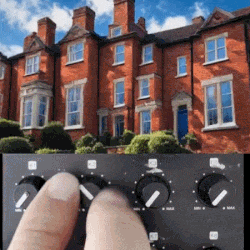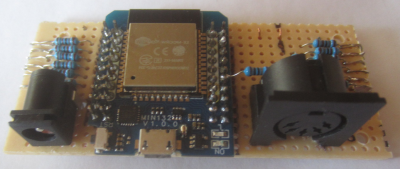Although it’s still possible to grab a couple of friends, guitars, and a set of drums and start making analog music like it’s 1992 and there are vacant garages everywhere yearning for the sounds of power chords, the music scene almost demands the use of a computer now. There are a lot of benefits, largely that it dramatically lowers the barrier to entry since it greatly reduces the need for expensive analog instruments. It’s possible to get by with an impressively small computer and only a handful of other components too, as [BAussems] demonstrates with this tiny digital audio workstation (DAW).
The DAW is housed inside a small wooden box and is centered around a Behringer JT-4000 which does most of the heavy lifting in this project. It’s a synthesizer designed to be as small as possible, but [BAussems] has a few other things to add to this build to round out its musical capabilities. A digital reverb effects pedal was disassembled to reduce size and added to the DAW beneath the synthesizer. At its most basic level this DAW can be used with nothing but these components and a pair of headphones, but it’s also possible to add a smartphone to act as a sequencer and a stereo as well.
For a portable on-the-go rig, this digital audio workstation checks a lot of the boxes needed including MIDI and integration with a computer. It’s excellent inspiration for anyone else who needs a setup like this but doesn’t have access, space, or funds for a more traditional laptop- or desktop-centered version. For some other small on-the-go musical instruments we recently saw a MIDI-enabled keyboard not much larger than a credit card.









 settled upon a simple linear arrangement of beams held within a laser-cut wooden box frame. Since these laser modules are quite small, some aluminium rod was machined to make some simple housings to push them into, making them easier to mount in the frame and keeping them nicely aligned with their corresponding LDR.
settled upon a simple linear arrangement of beams held within a laser-cut wooden box frame. Since these laser modules are quite small, some aluminium rod was machined to make some simple housings to push them into, making them easier to mount in the frame and keeping them nicely aligned with their corresponding LDR.









